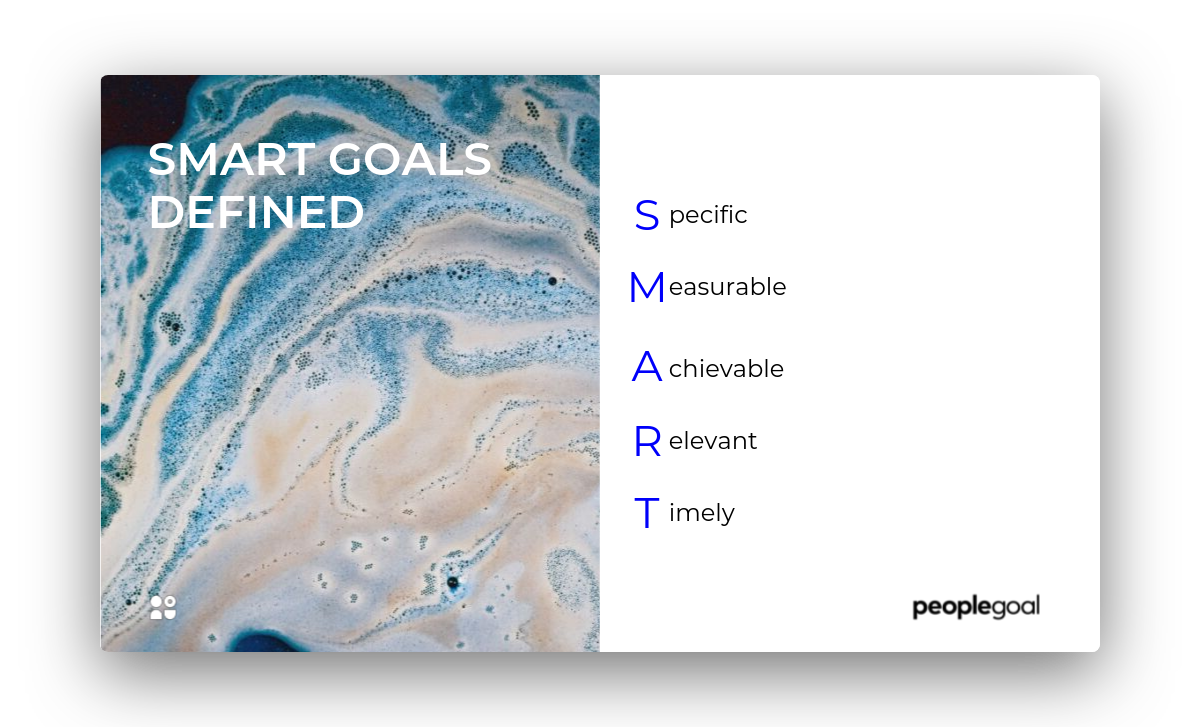The SMART goals methodology is a commonly utilized tool to set effective goals for marketing. It allows marketers to set up actionable objectives in line with the organizational goals, as well as aligning them to the personal and professional development of an individual.
As we’ve previously covered, the SMART goal acronym stands for specific, measurable, achievable, relevant and timely. The SMART methodology allows individuals to set objectives for achieving individual success and organizational growth.
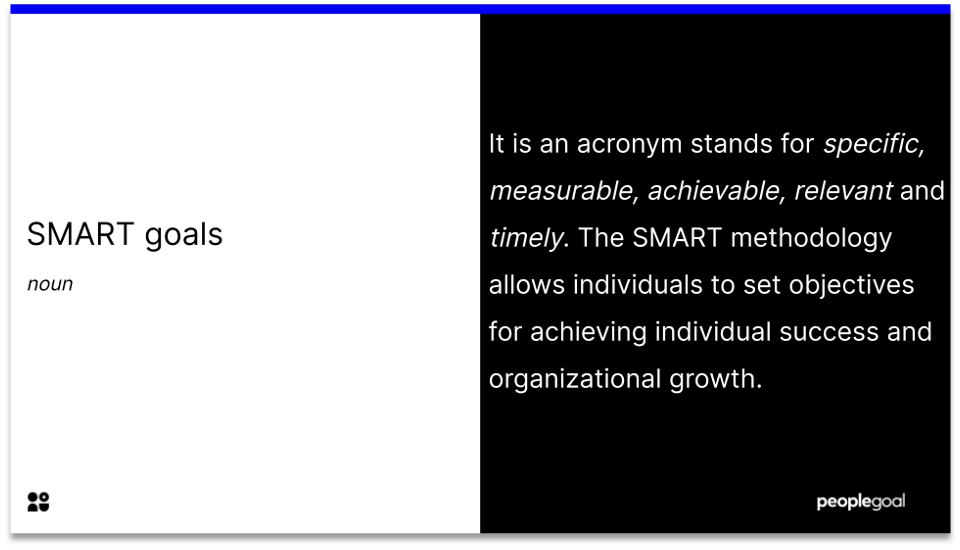
Setting effective SMART goals for marketing starts with the larger, long-term strategic goals. What is the main objective for your business? Is it customer acquisition, conversion or retention? How can marketing support these broader organizational objectives? How can you align your Sales & Marketing strategy? Or think even bigger: how can the marketing department contribute to the overall business mission?
Get an in-depth guide to the SMART goals methodology and what exactly it is here.
Do you need to increase brand awareness, leads or sales? It’s key to identify the long-term strategic objectives so that you can set specific, relevant goals for the tactics you are using.
Setting up SMART goals for marketing is also essential for your team to help them understand how they can contribute to the overall organizational performance.
How to write SMART goals:
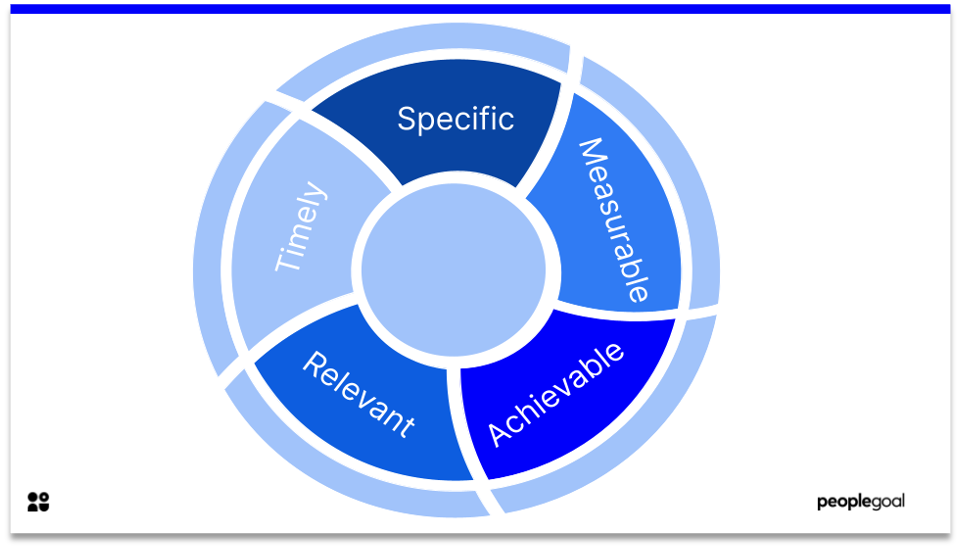
In order to be able to set SMART goals you should be asking yourself these questions:
Specific – What exactly do I want to achieve?
Measurable – How will I know when I’ve reached my goal?
Achievable – How can I achieve this goal? How realistic is this goal?
Relevant – Why is this goal worthwhile? How does it align to the organizational goals?
Timely – When do I want to achieve this goal?
Specific:
With that in mind, setting a goal to increase the number of paying customers is not going to help you get anywhere. You need to define not only what you want to achieve but also how are you going to get there.
Measurable:
To be able to see the impact of your strategy and tactics, you need to choose the right metrics to measure. There are a myriad of tools that will help you do so, including conversion rate optimization tools, web analytics platforms, A/B testing software, and heatmap tools, if you feel uncertain where to start.
Attainable:
Research shows that most effective goals are those that are challenging but achievable. Don’t set goals you know you won’t be able to reach before you start. Try to avoid setting goals you think your supervisor wants to hear. Set marketing goals that are in line with what your team wants to achieve but which are still realistic for you.
Relevant:
When setting marketing objectives make sure they are aligned to the company objectives as well as the strategy for your department. Are you focusing on digital marketing or events marketing? Which tactics support the strategy?
Timely:
Last but not least, setting a realistic deadline for your goal is key to actually achieving it. It will also enable you to track your progress and reflect on the process once you reach your goals.
We’ve created a template you can download here to help you set up your SMART goals.
There are additional questions you can ask yourself to set SMART goals. You can also apply these commonly used verbs to set your goals.
What does a good long-term marketing strategy goal look like?
Your marketing objective should be your guide to make strategic decisions that will help you to reach higher. Refer back to it when you are questioning what your next steps should be. So, let’s assume the organizational objective is to grow the overall business revenue. The organizational goal can be:
Increase the business revenue in the UK by 50% by April 2021.
You should set up a marketing objective directly aligned to the organizational goal such as:
Increase the online business revenue in the UK by 25% by April 2021.
Therefore, you need to acquire new customers. In line with that, your marketing strategy objective can be:
Grow the small business customer segment by 20% in 2021 utilizing the new digital channels in the organization.
Of course, you can choose a different strategy to increase the organizational revenue such as increasing profitability, changing the pricing strategy or increasing customer lifetime value, amongst others. This example is just illustrative to help you understand the SMART goal methodology. You can find more examples here.
Once you have established your long-term marketing objective you need to develop a number of objectives relevant to each of the tactics that will support it. Think about the specific tactics and activities you use. These may include SEO, email marketing, social media, content marketing, PPC or traditional tactics such as direct mail.
Examples of SMART Goals for Marketing
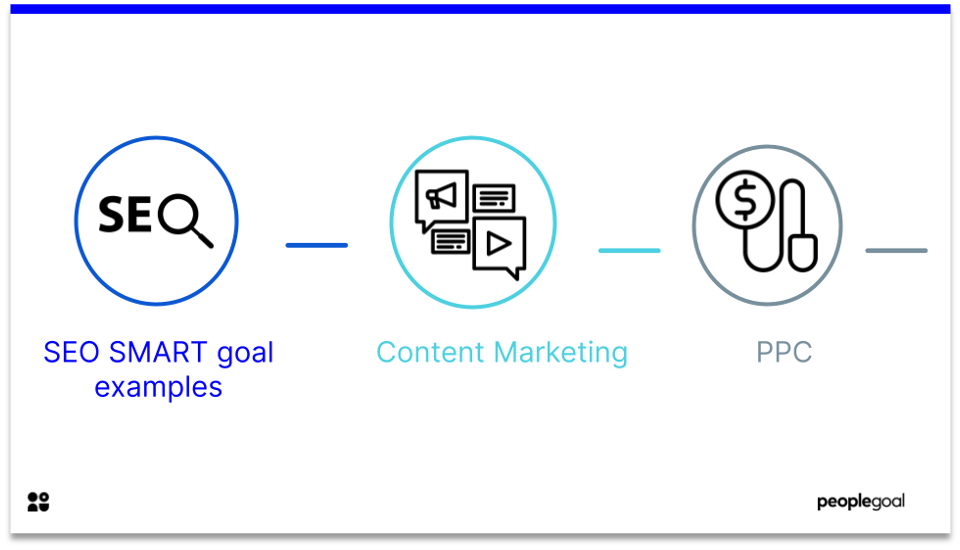
Need more inspiration for your marketing goals? You can find a few examples for some of the most commonly used digital marketing tactics:
SEO SMART goal examples
- Gain xx relevant backlinks to xx page through xx by xx.
- Improve the rank for primary keywords (define them) to xx by xx.
- Decrease the bounce rate of the website to xx by xx.
Content Marketing
- Increase the traffic to the website by xx% by creating xx articles on xx per month by xx.
- Optimize the underperforming blogs (define them) with high-volume keywords to improve the traffic to xx monthly visits by xx.
- Develop a podcast series campaign on xx and gain xx listens per month by xx.
-
PPC
- Increase the conversion rate of xx campaign to xx by xx.
- Implement display ads campaign focused on xx and grow number of leads by xx.
- Increase the number of sales from xx campaign to xx by xx.
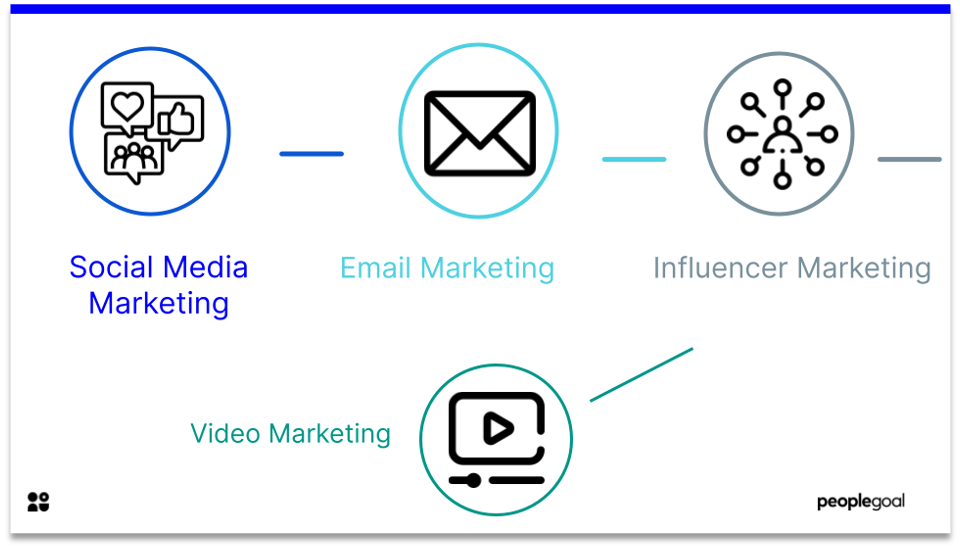
Social Media Marketing
- Develop an online community with xx active members by xx.
- Gain xx new followers on xx by xx per month by xx.
- Gain xx mentions on xx by xx.
Email Marketing
- Improve the CTR of current lead nurturing DRIP campaign to xx by xx through xx.
- Develop a xx email campaign with xx CTR by the end of xx.
- Implement a customer loyalty email campaign with xx conversion rate in next xx months.
Influencer Marketing
- Gain xx visits to xx page through our network of influencers in xx months.
- Increase the sales of xx by xx % through the network of influencers in next cxx months.
- Get xx sign-ups to xx in next xx months through promotional influencer marketing campaign on xx platform.
Video Marketing
- Increase the number of average video views on xx to xx through xx by the end of xx.
- Develop a promotional video campaign focused on xx and gain xx leads per month from it by xx.
- Develop a weekly xx series with xx views per week by the end of xx.
PeopleGoal allows you to set organizational, departmental, team and individual goals that can help you to define your marketing strategy and objectives. Furthermore, you can easily share your objectives with your team and hold the employees accountable for their responsibilities.
Yet, potentially the most important part of setting up SMART goals for Marketing is to review them, analyze the performance and optimize for the future. Therefore, make sure to revisit them and you’ll continue to improve.
Ready to 3x Your Teams' Performance?
Use the best performance management software to align goals, track progress, and boost employee engagement.





